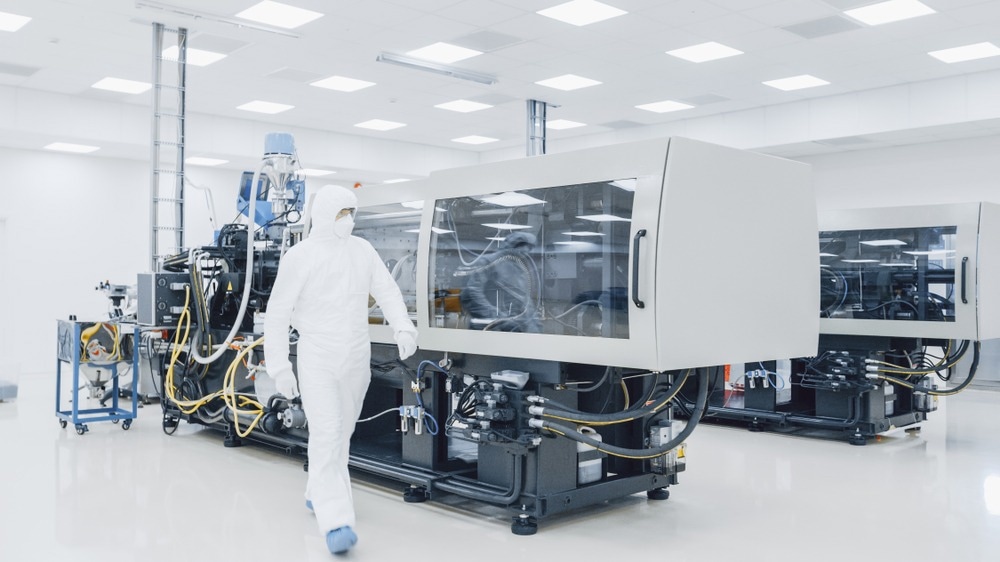 By Surbhi JainReviewed by Susha Cheriyedath, M.Sc.Jul 7 2022
By Surbhi JainReviewed by Susha Cheriyedath, M.Sc.Jul 7 2022In an article recently published in the journal Bioprinting, researchers discussed a crosslinking method for 3D cryoprinting and its suitability for freezing-modulated crosslinking.

Study: Freezing-modulated-crosslinking: A crosslinking approach for 3D cryoprinting. Image Credit: Gorodenkoff/Shutterstock.com
Background
In the last ten years, 3D bioprinting, also known as the printing of cell-filled or physiologically significant material, has made considerable advancements and is now a common manufacturing technique for tissue engineering. A common bioink for extrusion-based 3D bioprinting, sodium alginate, has great biocompatibility and is inexpensive.
Printing using alginate bioinks presents substantial time and crosslinking rate challenges. A technique known as "3D cryoprinting" or "3D cryobioprinting" uses subfreezing temperatures to freeze/solidify the bioink as it is deposited in order to create complex objects out of soft bioinks like alginate.
While soft biomaterials can be employed in 3D cryoprinted hard structures, it is difficult to defrost these rigid, frozen structures into scaffolds for utility in tissue engineering. Since the object is frozen, many popular crosslinking techniques used for 3D bioprinting could not be used. Internal crosslinking has the disadvantage that the bioink can only be extruded via the nozzle for a short period of time before it becomes very viscous. There are still few options for crosslinking 3D cryoprinted items, and so innovation in this area could greatly enhance the technology.
About the Study
In this study, the authors discussed a method for the crosslinking of frozen items made by 3D cryoprinting, called freezing-modulated-crosslinking. Frozen items were thawed in a crosslinker fluid at a regulated melting rate during freezing-modulated crosslinking so that crosslinking happened layer by layer and the object could keep its printed shape. To identify the crucial thermal parameters, the process was investigated using a mathematical model. By printing a variety of multi-layer alginate sculptures, the findings were experimentally validated.
The team examined the freezing-modulated-crosslinking technique for crosslinking of 3D cryoprinted objects. A low-viscosity alginate bioink was first extruded through the nozzle during 3D cryoprinting and then frozen as it was put on the print plate. The frozen item could be kept in a freezer for either short- or long-term use after printing is finished. When the scaffold was prepared for usage, freezing-modulated-crosslinking was utilized to thaw the frozen object slowly inside of a crosslinker bath while its original shape was preserved. The scaffold was also utilized for tissue engineering purposes. In order to crosslink frozen, a-cellular scaffolds, freezing-modulated crosslinking was examined.
The researchers employed a dimensionless analysis to ascertain which thermal variables governed the freezing-modulated crosslinking process. By the printing of different shapes out of sodium alginate solution at a 2% concentration and using the freezing-modulated crosslinking to crosslink them in a CaCl2 bath, the impact of these factors was quantitatively investigated.
Observations
The lattices showed the same amount of shrinkage whether the crosslinker bath included 2%, 4%, or 6% CaCl2. Even slower melting rates, such as with a crosslinker temperature of -2 °C, could be used with freezing-modulated crosslinking; however, this lengthened the crosslinking process and resulted in no discernible increases in object accuracy. Thus, the recommended conditions for freezing-modulated crosslinking of alginate objects in CaCl2 were an initial object temperature of -80 °C and a crosslinker bath temperature of -0.05 °C. When compared to objects that were melted at slower rates, objects that were melted more quickly showed more shrinkage. A statistically significant difference in shrinkage was seen between lattices crosslinked at 20 °C or room temperature, and those crosslinked at -0.05 °C.
The printed objects produced by freezing-modulated crosslinking at an object temperature of -80 °C and a crosslinker bath temperature of -0.05 °C most nearly resembled the desired objects in terms of size. The size and shape of the objects were not statistically significantly affected by the CaCl2 concentration in the crosslinker bath.
A drawback of using CaCl2 to crosslink alginate bioinks is that a small sample size is required in order for enough crosslinker to diffuse into the cryoprinted item.
Conclusions
In conclusion, this study developed a technique for crosslinking 3D cryoprinted objects called freezing-modulated crosslinking and employed a mathematical model to determine the critical temperature factors. According to the experimental findings, this approach could crosslink objects made of soft bioinks without causing them to lose their intended shapes.
The outcomes showed that this method is workable and qualitatively supports what the mathematical model predicted. Frozen-modulated crosslinking's expansion of the types of biomaterials that may be utilized for 3D cryoprinting and the kinds of structures that can be printed using soft bioinks both increase the potential uses of these technologies.
The authors mentioned that the potential applications of 3D cryoprinting could be increased by methodically analyzing the proposed crosslinking strategy. Alginate scaffolds that have been 3D cryoprinted in layers can be seeded with cells for tissue regeneration or 3D cell culture. They stated that future research will need to look into how the freezing-modulated crosslinking process affects cell viability if it is to be employed with bioinks that contain cells.
Disclaimer: The views expressed here are those of the author expressed in their private capacity and do not necessarily represent the views of AZoM.com Limited T/A AZoNetwork the owner and operator of this website. This disclaimer forms part of the Terms and conditions of use of this website.
Source:
Warburton, L., Rubinsky, B., Freezing-modulated-crosslinking: A crosslinking approach for 3D cryoprinting. Bioprinting e00225 (2022). https://www.sciencedirect.com/science/article/pii/S2405886622000355